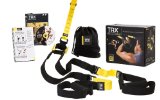So I mentioned that I am evaluating a TRX suspension system, by Fitness Anywhere, via a 12-week fitness program. Today was Day 47.
No running today, and thankfully the calf muscle soreness seems to be dissolving.
I started out with 7 sets of 5,5 snatches with the 24 KG kettlebell, on the minute. I am slowly trying to build up my endurance with the 24KG kettlebell, since that is the kettlebell used for RKC and SSST testing.
I followed this by TRX Day 2 of Week 7 of the FORCE program — once again, by the time I finished the pendulum swings and the oblique pikes, I was just a puddle of sweat. Thankfully my recovery period seems to be shortening, so I didn’t have to puddle for long.
Finally, I am amazed at the number of articles I am seeing slamming those squishy running shoes everyone seems to be using. Since I am just starting out running, I don’t have any bad habits to break, and with my engineering background, I want to choose the best running method and equipment to use from the start. And the more I research this, it seems clear that you really can’t beat the millions of years of design evolution that went into the human foot — the foot is optimized, all by itself, for running. Adding pillows, rigid plastic encasements, gel chambers, and lots of padding (i.e., modern “running” shoes) won’t make the foot run better — in fact, it just might cause injury and certainly promotes poor running technique. I haven’t found anyone who can explain why squishy running shoes are better, other than because lots of other people buy the squishy running shoes. “Running” shoe marketing departments may know how to sell lots of shoes, but they don’t seem to have the moral high ground.
So I am happy to continue using my VFFs, though actually using my leg muscles as they were meant to be used while running does make them sore!

